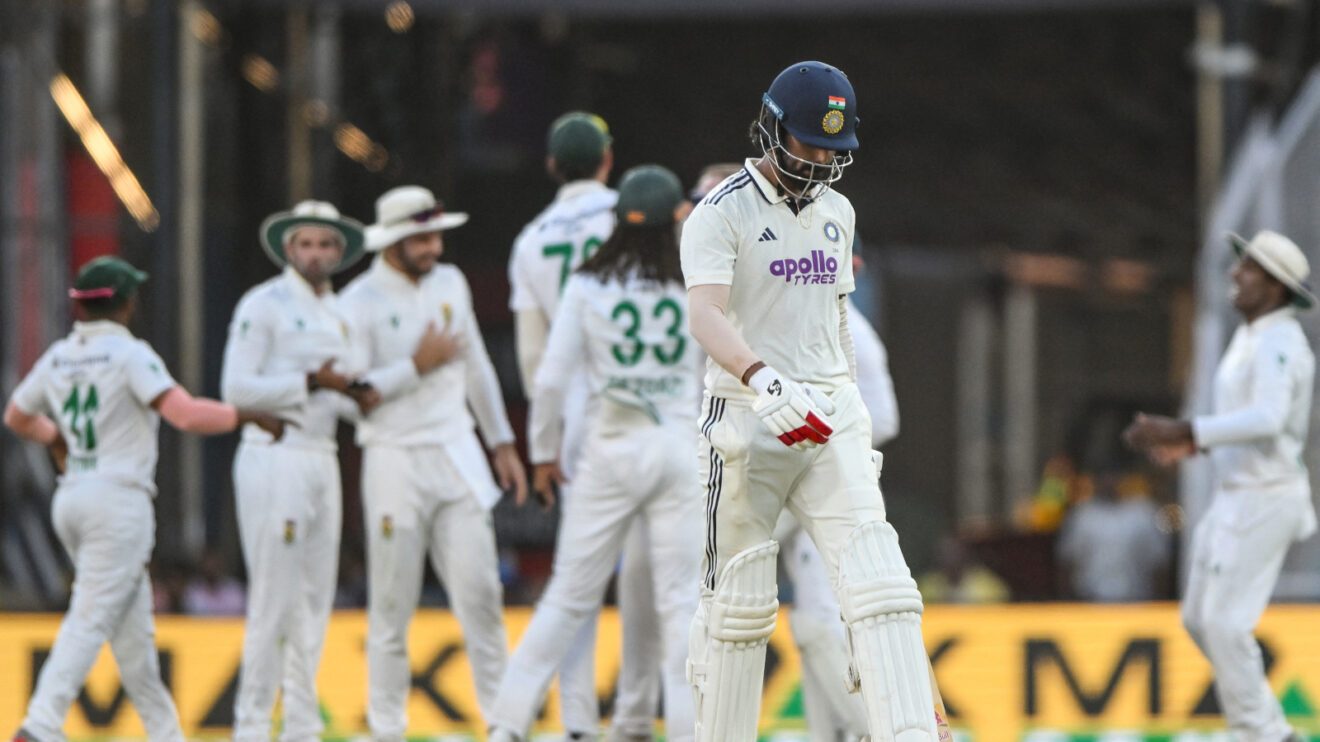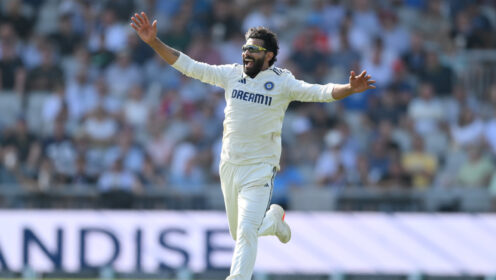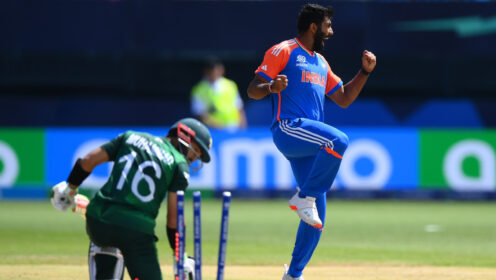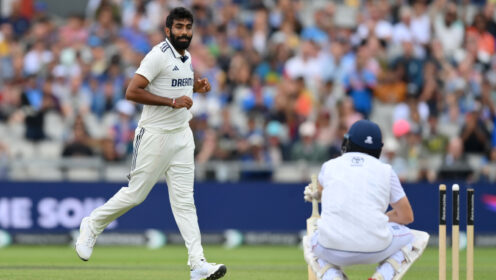7 talking points from South Africa’s famous series win – how good is this Indian team, really?

South Africa won their first Test series in India on Wednesday as they beat their hosts by 408 runs to claim the series 2-0.
The series win the first since a team which was led by Hansie Cronje and which included players like Jacques Kallis, Shaun Pollock, Gary Kirsten and Allan Donald won 2-0 in March 2000.
It’s a fantastic achievement and quite naturally there are plenty of talking points generated by the historic occasion. Let’s take a moment to unpack some of the issues and moments.
1. Temba Bavuma is quite special
There were plenty of outstanding performances in the two Test series as multiple players shone at different moments. But Temba Bavuma deserves special mention for a couple of reasons.
Firstly, his undefeated knock of 55 in the second innings at Kolkata was pivotal in the context of the whole series. It has been said before, but we will say it again, that knock was the equivalent of a century on almost any other track.
It gave the Proteas enough of a lead to bowl at, and as much as the bowlers were sensational in dismissing India for 93, it was Bavuma’s knock that created that chance.
He may not always get the appreciation and love that he deserves, but in Bavuma South Africa have a great batsman and a great leader.
And speaking of leadership, that is the second part of Bavuma’s contribution that deserves mention. As Proteas Test skipper he remains undefeated.
He now boasts 11 wins and a draw from 12 games in charge. Understated and calm, Bavuma is a fantastic leader.
He may be a little more introverted than Hansie Cronje or less physically imposing than Graeme Smith, but make no mistake, Bavuma is in charge out there, imposing his will and leading from the front.
The Proteas are a good side when Markram is in charge, they are a much better XI when Bavuma is in the mix.
2. That declaration
Declarations can be complicated and everyone has an opinion on the matter. Could it have come earlier? Absolutely. Why did Temba choose to keep going as long as he did? There were many reasons to keep batting deep into day four.
Underpinning it all was the fact that the series would be won if the game was drawn. In other words, it was better to bat on too long and draw the game, than declare too early and risk India miraculously getting it over the line.
Of course there were plenty of other considerations… The opportunity to have two shots with a new ball. Being able to start day five with a relatively new ball. Maximizing the swing and shadow that were available deep into the final session on the previous days.
Most importantly though it was about breaking India psychologically by completely dictating terms – toying with them, if you will. India would have expected a declaration before lunch – it didn’t come.
They would have hoped for it at lunch – still nothing. They would have assumed it was coming shortly after the break – wrong again. By the time it came the game had just gone, it was completely out of sight.
Hope can be cruel, but hopelessness is brutal and Bavuma showed he was not to be messed with as he made India bend to his will before unleashing his attack on their weary and brow-beaten batters.
Also read: How rich is Sachin Tendulkar? 5 points behind his mega net worth
3. Markram’s catching feat
There was so much going on in the compelling second Test that Aidan Markram’s achievement of nine catches in a game was almost completely overlooked.
Marco Jansen was named Player of the Match for his all-round efforts, but such was Markram’s work at slip that he quite easily could have claimed the accolade. Never before in the 150-year history of Test cricket has a fielder managed to take nine catches in an innings.
Only once before had a fielder managed eight in a Test. To put Markram’s achievement into context, nine catches in a game is almost a record for a wicketkeeper. Nine catches in a match is the best Mark Boucher ever managed.
It was the best return for Ian Healey, Dave Richardson… Only eight keepers in the history of the game have managed more than nine catches in a match, so for a fielder to weigh in with that sort of return is outrageous.
Most of those catches were very good efforts as well, standing up at slip against the spinner.
4. Two-Test series aren’t great
It defies belief that South Africa is still playing two match series. India, Australia and England indulge themselves in marathon five Test series as they set themselves up as the kings of the game.
But the World Test Champions get to feed off the scraps playing awkward two game series. make no mistake, two Test series are better than one offs, but Temba Bavuma and his men should definitely be playing three Test series.
Yes, three game series can still be drawn; but Test cricket operates on so many different levels, there is so much ebb and flow that a three game series offers a whole other level of complexity and nuance.
5. An embarrassment of riches
People who live in Cape Town know how easy it is to take things for granted. When you live in a city with one of the wonders of the world plonked in its very centre it can be quite easy to stop giving it the attention it deserves.
As a Test unit the Proteas are starting to assume similar status. South Africa won the series in India playing without their best bowler in the form of Kagiso Rabada. In the first Test they left out Senuran Muthusamy who had been their Player of the Series in Pakistan.
When he returned in Guwahati, he hit a maiden Test century and now boasts a Test average of 55.42. David Bedingham, Dewald Brevis, Lu-handre Pretorius and Corbin Bosch are all in the wings.
There is a wealth of talent and experience available to choose from, and as has been the way in the Shukri Conrad and Temba Bavuma era, there is always somebody who will find a way to make the magic happen.
6. Doing things the right way
It is worth mentioning that the second Test in Guwahati was meant to be played at the same time as the opening Ashes Test. The Ashes game didn’t last two days as England’s insistence on unrelenting and thoughtless attack led to a brisk demise.
All the while the Proteas played proper Test cricket. They applied themselves at the right times and they ratcheted up the aggression when it was called for. Marco Jansen’s first innings knock of 93 from 91 balls would not have been out of place in a Baz Ball Test.
But it was also not out of place in Guwahati where he came to the crease with the score on 334 for seven. At that point brisk runs and a bit of caution to the wind were appropriate.
The team had runs behind them and they had time ahead of them – all-out attack wasn’t a risk, it was appropriate. Just as it had earlier made sense for Tristan Stubbs to apply himself at three with a more traditional Test knock of 49 from 112 balls.
By playing more traditional Test cricket at the top of the order, the middle and
7. How good is this India team really?
Winning a Test series in India is a phenomenal achievement and the proteas deserve to be lauded for whitewashing their opponents. But how good is this India team really?
Currently ranked fourth in the world, they boast three batters in the top 12 of the World Rankings, three bowlers in the top 13 (including the world number one) and the top ranked allrounder.
They are certainly not a bad team. But unlike the team that boasted Sachin Tedulkar, Rahul Dravid, VVS Laxman, Virender Sehwag and Anil Kumble or the team of Rohit Sharma, Virat Kohli, Cheteshwar Pujara and Ravi Ashwin, this Indian team is a team in a rebuilding phase.
Bumrah is world class and Jadeja is aging but outstanding. They may yet go on to become a great side, but right now players like Rishabh Pant, Yashasvi Jaiswal, Sai Sudharsan and KL Rahul are more intimidating as white ball players than they are in Tests.
Read next: Who gives a toss? It is time to eliminate the lottery of the coin flip



